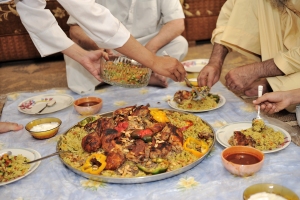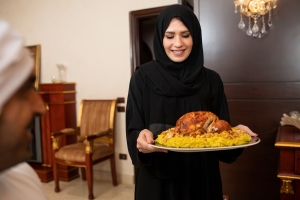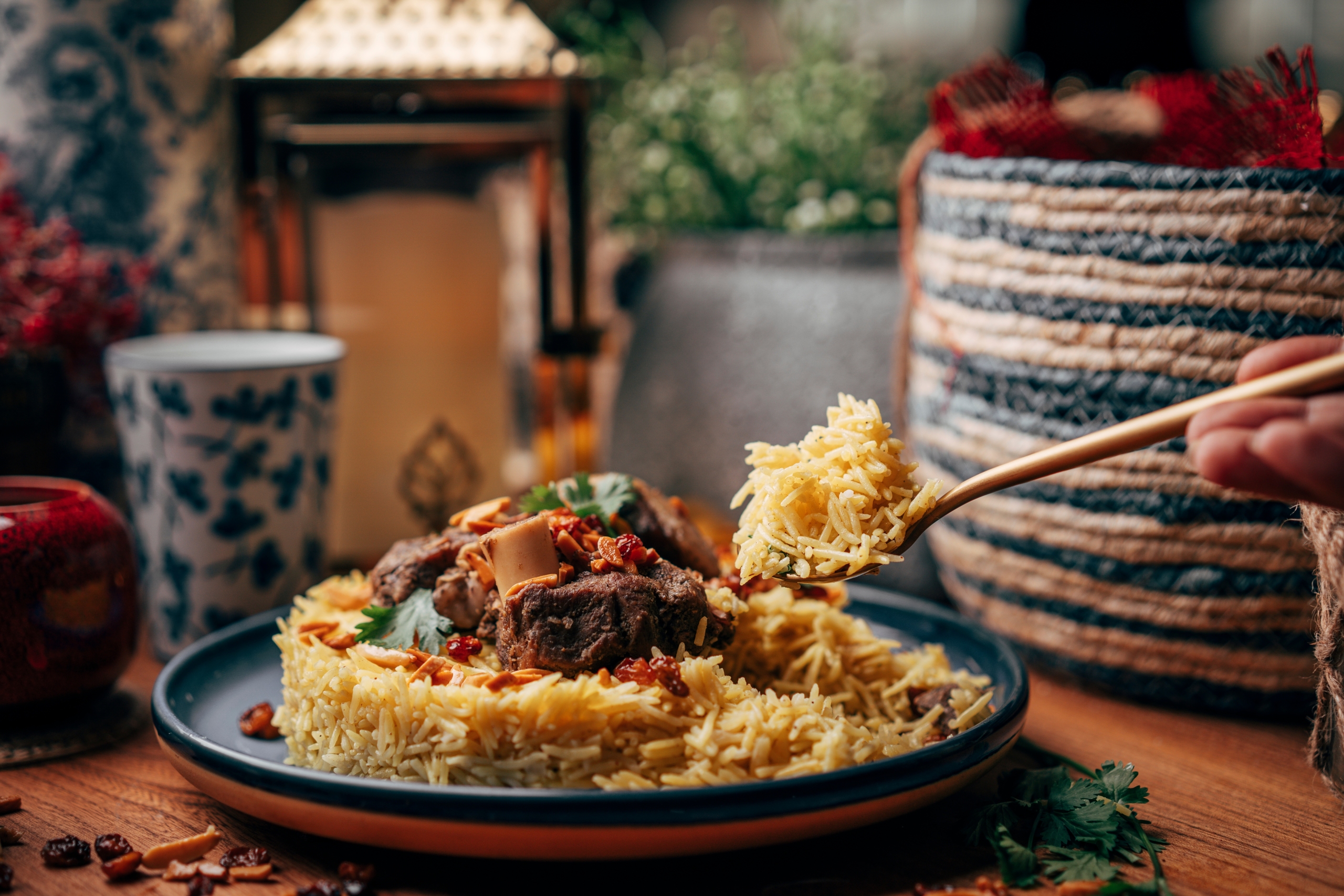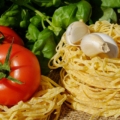Across the Arabian Peninsula, where desert landscapes stretch like ochre seas and ancestral customs shape daily life, one dish continues to unite households and regions alike: kabsa. At first glance, it might appear to be little more than rice and meat. But beneath its simplicity lies a layered story of hospitality, resourcefulness, and exchange. In Saudi Arabia and neighboring Gulf countries, kabsa is not just consumed—it is presented, shared, and symbolically resonant.
Desert Origins
Kabsa emerged in the arid terrain of the Peninsula, where cooking practices evolved under conditions of scarcity and mobility. Among Bedouin communities, meals had to be practical and nourishing. A single-pot dish combining rice, lamb or chicken, and a careful selection of spices made efficient use of limited ingredients. Slow-cooked over open fire, this method allowed flavors to merge while preserving the essence of each component.
Some accounts trace the dish’s development to Yemen, whose culinary traditions feature seasoned rice long before the rise of modern national borders. With the expansion of trade routes linking the Arabian Gulf to Persian, Indian, and Mediterranean cultures, kabsa absorbed external influences—new spices, cooking techniques, and modes of presentation. Despite these shifts, the foundational structure remained: long-grain rice, tender meat, and a fragrant blend of cardamom, cinnamon, clove, and dried lime.
The term kabsa stems from the Arabic root kabs, meaning “to press,” referencing the method of tightly layering ingredients during cooking to enhance fusion and aroma.
While not historically proven, some folkloric narratives suggest possible connections with Andalusian rice dishes introduced through medieval trade—evoking distant parallels with paella. Regardless of its precise lineage, kabsa evolved locally into a distinct expression of Arabian culinary identity.
A meal meant for many

Kabsa is as much about form as it is about content. Traditionally, it is served on a large communal tray placed at the center of a shared cloth. A mound of spiced rice is topped with generous cuts of meat and often garnished with toasted nuts, fried onions, or fresh herbs. Diners gather around, seated on the floor, and eat with their right hand from the portion closest to them—a practice that reflects long-standing codes of hospitality, equality, and social cohesion.
In everyday life, kabsa might appear at a family lunch. But its deeper significance is revealed during weddings, communal gatherings, or seasonal celebrations. In such contexts, preparing and offering kabsa becomes a gesture of inclusion—of welcoming others, affirming abundance, and reinforcing collective identity.
Regional variations
Despite its widespread presence, kabsa is far from uniform. Across the Gulf, regional and national variants have developed, each with distinct traits. In Qatar, Bahrain, and Kuwait, the dish is commonly called machbous or majboos; in the United Arab Emirates, makbous. The rice may appear yellow from saffron or turmeric, or take on a reddish or brown hue from tomato or darker spice blends. The intensity and character of seasoning often reflect local preferences.
Proteins vary too—lamb and chicken dominate, but goat or even camel are not uncommon. Accompaniments shift with geography: from raisins and roasted almonds to cucumber-yogurt salads or the fiery tomato-based sauce dakkus. This multiplicity of styles speaks to kabsa’s adaptability and its role as a unifying dish with space for regional creativity.
A dish with symbolic weight

Though kabsa is not ritual in a strict sense, it occupies a visible role in certain religious and communal contexts. During the month of Ramadan, many families serve kabsa for iftar, the evening meal that breaks the daily fast. It is also customary during Eid celebrations, especially Eid al-Adha, when lamb—sacrificed according to Islamic tradition—is frequently cooked as kabsa and shared with relatives, neighbors, and those in need.
The communal style of eating—gathered around a single dish, with minimal barriers—reinforces values of humility, mutual care, and social connection. In this way, kabsa becomes more than sustenance: it functions as a vehicle for cultural continuity and collective meaning.
A global lineage
Kabsa belongs to a much wider culinary family. It shares clear parallels with other rice-based dishes developed along ancient trade routes. Spanish paella, for instance, echoes kabsa in structure if not in seasoning: rice cooked with meat or seafood, aromatics, and vegetables in a single vessel. The biryani of the Indian subcontinent draws even closer—layered basmati rice, intricately spiced meat, and rich condiments—though the cooking method often involves dum, a sealed-steam technique that differs from kabsa’s more integrated style.
Further back in time, kabsa’s DNA intersects with Central Asian pilaf and Persian pulao, predecessors that traveled alongside merchants and travelers along the Silk Road. In this global culinary lineage, kabsa occupies a distinctive place as the Arabian Peninsula’s interpretation of a much older tradition: the convergence of rice, spice, and ceremony.
Contemporary reach
Today, kabsa travels far beyond its desert origins. It features in Gulf diaspora communities, appears on international menus from London to Istanbul, and garners interest from global food enthusiasts drawn to its vibrant flavors and textured history. Its visual appeal—golden grains, jewel-toned garnishes, contrasting textures—adds to its cross-cultural allure.
For those encountering it for the first time, eating kabsa can offer more than just a new flavor. It invites participation in a shared space, one where food becomes a point of encounter, and where culinary practice continues to tell stories about place, people, and belonging.





